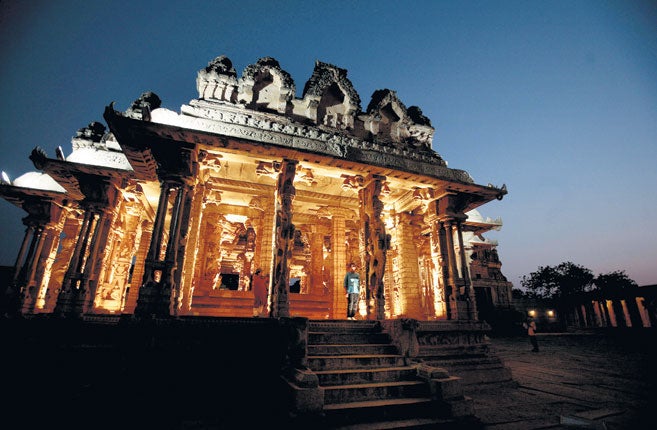Picture of the Day: Ruins of lost kingdom threatened from below

Your support helps us to tell the story
From reproductive rights to climate change to Big Tech, The Independent is on the ground when the story is developing. Whether it's investigating the financials of Elon Musk's pro-Trump PAC or producing our latest documentary, 'The A Word', which shines a light on the American women fighting for reproductive rights, we know how important it is to parse out the facts from the messaging.
At such a critical moment in US history, we need reporters on the ground. Your donation allows us to keep sending journalists to speak to both sides of the story.
The Independent is trusted by Americans across the entire political spectrum. And unlike many other quality news outlets, we choose not to lock Americans out of our reporting and analysis with paywalls. We believe quality journalism should be available to everyone, paid for by those who can afford it.
Your support makes all the difference.The ruined city of Hampi, a Unesco world heritage site and one of the most important archaeological locations in southern India, is under severe threat, experts have warned. Illegal quarrying and blasting have severely damaged some of the remains and pushed others to the verge of collapse.
Last week, part of the entrance to the site's Varaha temple fell down and three other parts of the complex were damaged.
Such is the situation that the Archaeological Survey of India (ASI) has established a team to try and ensure the complex is properly protected.
"Illegal quarrying is in progress in the surrounding villages. Some quarries continue operation in spite of regulations," Dr A Puttaswamy, a local research scholar, told Indian media.
The remains at Hampi are what is left of the vanished civilisation of the kingdom of Vijayanagar, which reached its height under the ruler Krishna Deva Raya during the first decades of the 16th century.
Built on the wealth of the cotton and spice trade, the city has been a World Heritage Site since 1986. Unesco says it drew the admiration of contemporary travellers between the 14th and 16th centuries.
Conquered by the Deccan confederacy in 1565, the city was pillaged over a six-month period before being abandoned.
No one from Unesco was available for comment yesterday. In a statement, the ASI said: "A taskforce comprising senior archaeologists and engineers has been constituted to suggest remedial measures. The damaged portions will be restored at the earliest."
Join our commenting forum
Join thought-provoking conversations, follow other Independent readers and see their replies
Comments